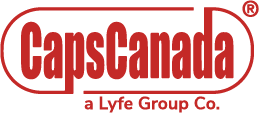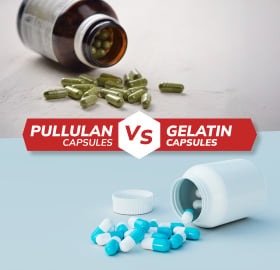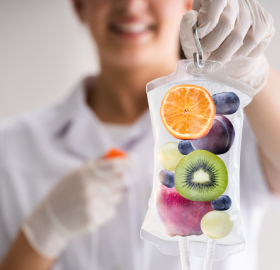Taken from the proceedings of the American Pharmaceutical Association annual meeting, August 1896 Held in Montreal, Canada
Capsules received a formal introduction to the American Pharmaceutical Association (APhA) in August 1896 in a presentation given by APhA member WM. C. Alpers. While capsules had been used by pharmacists and physicians for over fifty years, they were not yet listed in the US Pharmacopeia. For the annual meeting, Alpers prepared a historical background of the development of capsules and presented it as a means of formalizing the recognition of capsules as a dosage form.
Alpers’ related the historical foundation of groundwork done by Mr. A. Mothes of Paris, France, the inventor of the first patented gelatin capsules in 1834. The first capsules were used to successfully mask the taste and odor of balsam of copaiba, a popular medicant, without the use of excipients.
The method of manufacturing used a small leather pouch that was filled with mercury; these together created a mold. The mercury-filled pouch resembled the shape and size of a small olive. The mold was dipped into a solution made of one part gelatin and three parts water. A rotary motion helped to distribute the gelatin over the pouch, with additional dipping done as needed to form a consistent outer layer. Once the gelatin capsule layer was firm, the mercury was emptied from the leather and the collapsed skin was removed from the new outer shell. The small neck opening of the capsule was trimmed, and it was then filled with copaiba oil (the medicine) by syringe. A small drop of gelatin was applied to the remaining hole to seal the capsule.
While the new dosage form gained popularity for its successes, Mothes, and his partner DuBlanc were protective of their new development and for a time would not supply empty capsule shells for filling by other pharmacists. Similarly, competing pharmacists were shielding their custom formulations, not wanting to supply these to Mothes and DuBlanc for contracted filling. This impasse led to the exploration of alternative methods of production in using gelatin to hide the taste and smell of medications.
Alpers shared the case of a Parisian pharmacist, Mr. Garot, who in 1838 engineered a related but varied method. Garot would use the active ingredients to form a mass, like a dough, and cut these into small pills. A needle was used to stab and pick up the pill, where it could then be immersed in the gelatin solution, then dried. Once the gelatin layer was dry, the needle was carefully warmed over a candle until the instrument could be removed. A spatula with a small amount of gelatin sealed the hole made by the needle. Great care was exercised to not allow the active ingredients to contact the outside of the gelatin shell so that taste-masking was as effective as possible. (Original source: Journal de Pharmacie, 1838 p. 78)
Further methods were described in various geographic locations using molds such as wood (Bucharest), sheep intestine (London), and iron (France, Germany, and the United States).
Particular to the United States, Alpers quotes the American Journal of Pharmacy in 1835 wherein Alfred Guillou (Philadelphia College of Pharmacy) described the following method:
“Provide a suitable number of narrow tin dishes, about 18 or 20 in length, ½ in. deep, and about 2 in. in width. In the length of these and in a line, plant or solder at a distance of one inch from each other a number of smoothly formed metallic knobs of an ovoid shape, whose apex having been somewhat lengthened out, forms a thin neck by which they are attached to the tin dishes. This neck may be about ½ of an inch in length. Procure a sheet of tin and perforate with round holes, of which the diameter will be equal to the thickness of the knobs. Having greased the knobs well with lard, so as not only to prevent any adhesion to them but also the adhesion of the inner sides of the capsules to each other after casting, pour melted glue (the most transparent having been selected) upon them and allow it to become tolerably stiff. If you think the shell is too thin, a second coat may be poured upon the first. The capsule having been coated, this cast is allowed to cool down to the ordinary consistency of India rubber, and having run a knife around the neck, you twist it briskly around and pull it upwards off the knob. It will immediately collapse and lose the form imparted to it on the mould, but if laid aside to dry, will by the time it has hardened have regained the desired rotundity. Place it upon your perforated plate or “filler”, and you can thus conveniently fill it with the article prescribed, and close the opening with a piece of gold-beaters skin.”
Eventually, empty two-piece capsules were manufactured and sold. This was a difficult process, as small variations in capsule wall thickness made the capsule joining process inconsistent. Automation would lead to greater consistency and lead to success for two-piece capsule manufacturing.
F.A. Hubel of Detroit, Michigan is credited by Alpers as securing the first patent for an automated machine to make empty two-piece capsules. Like manual manufacturing, the process involved dipping mold pins into a gelatin solution, and drying the gelatin, and cutting and stripping the two-part shells off the molds. In Hubel’s early machines, the capsule parts were then inspected and joined manually.
Albers quoted a letter of The Merz Capsule Company of Detroit describing the difficulties:
“In order to make capsules properly and sufficiently cheap it requires a large amount of complicated and expensive machinery, and constant attention to small details, in as much as the one-thousandth of an inch difference, more or less, in the thickness of a capsule will either make it a loose-joining or a tight-joining capsule.”
As empty two-piece capsules became more available through mass production, their popularity and use soared. Another inventor, Mr. Heineman summed up several benefits as follows:
“By means of these (capsules) the druggist is enabled himself to fill elastic capsules as occasion may require, perfectly and without loss of time, doing the work as well as the capsule manufacturer himself could do the same in the factory. The convenient shells will keep almost indefinitely, are always ready for use, and enable the druggist not alone to avoid carrying a large stock of filled capsules, but enable him to dispense freshly made capsules containing an almost indefinite variety of formulas with whatever variations physicians may be pleased to give them from time to time, as the needs of the patient may require.”
Mr. Alpers report, given in 1896 provides an intriguing and captivating view for what has become the most preferred dosage form of modern medicine. In the twenty first century, empty capsules are manufactured on large, automated Hard Capsule Machine’s (HCM’s) having similar steps to early, rudimentary processes. Cap and body mold pins are dipped into temperature and viscosity controlled liquified solution, the pins rotate to distribute solution evenly, these capsule halves are dried to the pins, stripped, and cut to length so that the two empty pieces can be joined. The work of the HCM is accomplished with little human interaction beyond initial machine set-up and material handling, and automation provides for greater consistency in capsule wall thickness and other critical parameters, which are now necessary for automatic capsule filling.
Modern capsule filling is likewise accomplished on high-speed, fully automated equipment, running as fast as 400,000 capsules per hour; fill materials include liquids, powders, pastes, pellets, tablets, and even smaller capsules. If they could see it now, I believe that Mothes, DuBlanc, Alpers, and other industry pioneers would be proud of the groundwork they laid many years ago.
Reference
Trimble, Henry (Ed.). (1896). The American Journal of Pharmacy. Philadelphia: Philadelphia College of PharmacyAssisting the pharma industry as a vendor for hard empty gelatin capsules
Learn more about capsule advances trends...













